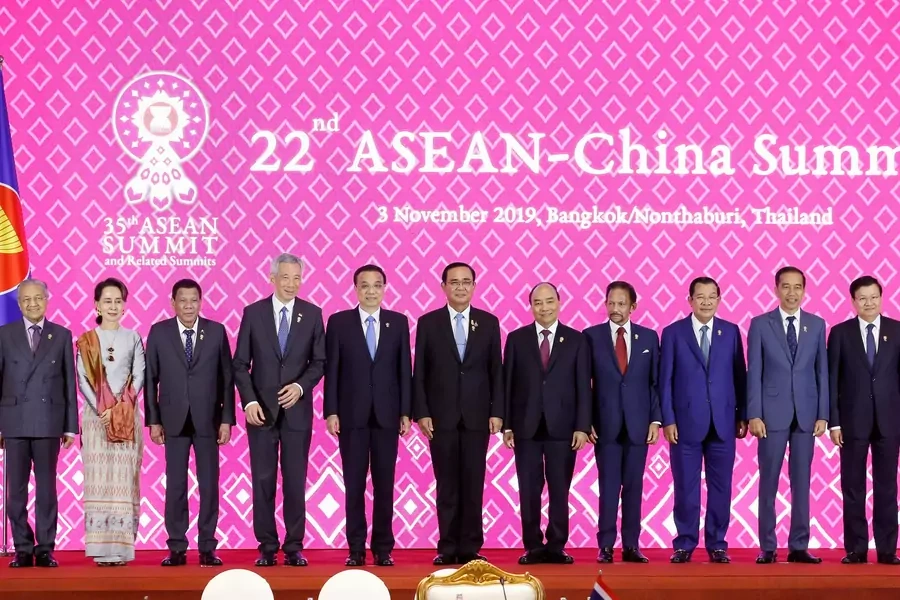Irresistible Inducement? Assessing China’s Belt and Road Initiative in Southeast Asia

Cheng-Chwee Kuik is associate professor and head of the Center for Asian Studies at the National University of Malaysia.
Southeast Asia occupies a central place on the map of China’s Belt and Road Initiative (BRI). President Xi Jinping chose to announce the maritime prong of the BRI in Indonesia, the largest country in Southeast Asia, in October 2013, a month after he had launched the overland prong of the BRI in Kazakhstan. Southeast Asia is where the land “Belt” and sea “Road” of the massive initiative converge. Mainland Southeast Asia is one of the six economic corridors of the BRI, while maritime Southeast Asia is where the Indian and Pacific Oceans converge, sitting on the intersection of sea lanes vital for communication, trade, and transportation of energy and other critical resources. As indicated by the title of David Shambaugh’s 2020 book, Where Great Powers Meet, Southeast Asia is also significant strategically to both China and the United States. Thus, Southeast Asia is China’s “strategic throat” and is crucial to its ascendancy as a world power.
More on:
To mitigate risks and maximize benefits in multiple domains, China has been financing and building a chain of ports, pipelines, highways, high-speed rails, land bridges, industrial parks, and digital connectivity centers across Southeast Asia and other parts of the world. While some of these endeavors predated the launch of the BRI, they have been accelerated since 2013. Together, these hard and soft infrastructure projects form a network of “dots” and “lines” on the BRI map, connecting interests, cultivating stakes, and consolidating interdependence between Beijing and other capitals along its peripheries. David Lampton and his colleagues thus observe: in this eventful century, all roads lead to Beijing, one way or another. The story of the BRI in Southeast Asia is about the power of proximity, as much as the proximity of power.
Geography aside, there are other fundamental factors that show the importance of Southeast Asia to China’s BRI and its wider interests. These include: the imperatives of creating external demand for Chinese firms and remedying internal overcapacity in some Chinese industries in the wake of the 2008–2009 global financial crisis, neutralizing what China perceives to be U.S.-led “regional encirclement,” as exemplified by Obama’s “rebalancing to Asia” and the ongoing Free and Open Indo-Pacific (FOIP) strategy, as well as narrowing the domestic socio-developmental gaps between China’s western and eastern regions, securing sustainable resources and energy supplies, and managing internal transitions and tensions after the decades-long reform and opening up policies.
Each of these imperatives is central to the Chinese Communist Party (CCP)’s regime legitimacy and political future. Each imperative highlights the increasing salience of Southeast Asia to China’s national interests and external strategies, even and especially when the CCP is struggling to cope with an increasingly challenging external environment. Indeed, as Sino-U.S. relations become more uncertain and China’s relations with the second-tier powers (other members of the Quad and other Indo-Pacific partners, including those in Europe) become more unstable, Southeast Asia will become more important to China. And as Beijing exhibits a growing inclination to use military coercion and political intimidation to safeguard what it sees to be its sovereign interests in the South China Sea and on other fronts, the BRI and other tools of cooperation and persuasion will become more important, not least to offset the adverse effects of China’s coercive actions and optimize its broader interests, while seeking prestige and power.
These seemingly contradictory actions are likely to continue, as Beijing develops its dual circulation strategy, which maximizes synergies between domestic and international markets, in response to growing pressures from Washington’s China policy, including the decoupling pursuit. Under President Joe Biden, Washington is determined to rebuild U.S. global leadership by revitalizing its military alliances and partnerships in Asia and Europe, while collaborating with like-minded nations to push back against China on issues related to security, technology, infrastructure connectivity, development, supply chains, and human rights, among other matters. Big-power rivalries are being intensified across the twin chessboards of high- and low-politics (i.e., security and nonmilitary domains, respectively), increasing pressures and sparing scanty space for smaller states to maneuver and hedge for survival.
For a further assessment of BRI in Southeast Asia, and its future trajectory, see the entire paper by Cheng-Chwee Kuik here.
More on:
 Online Store
Online Store
